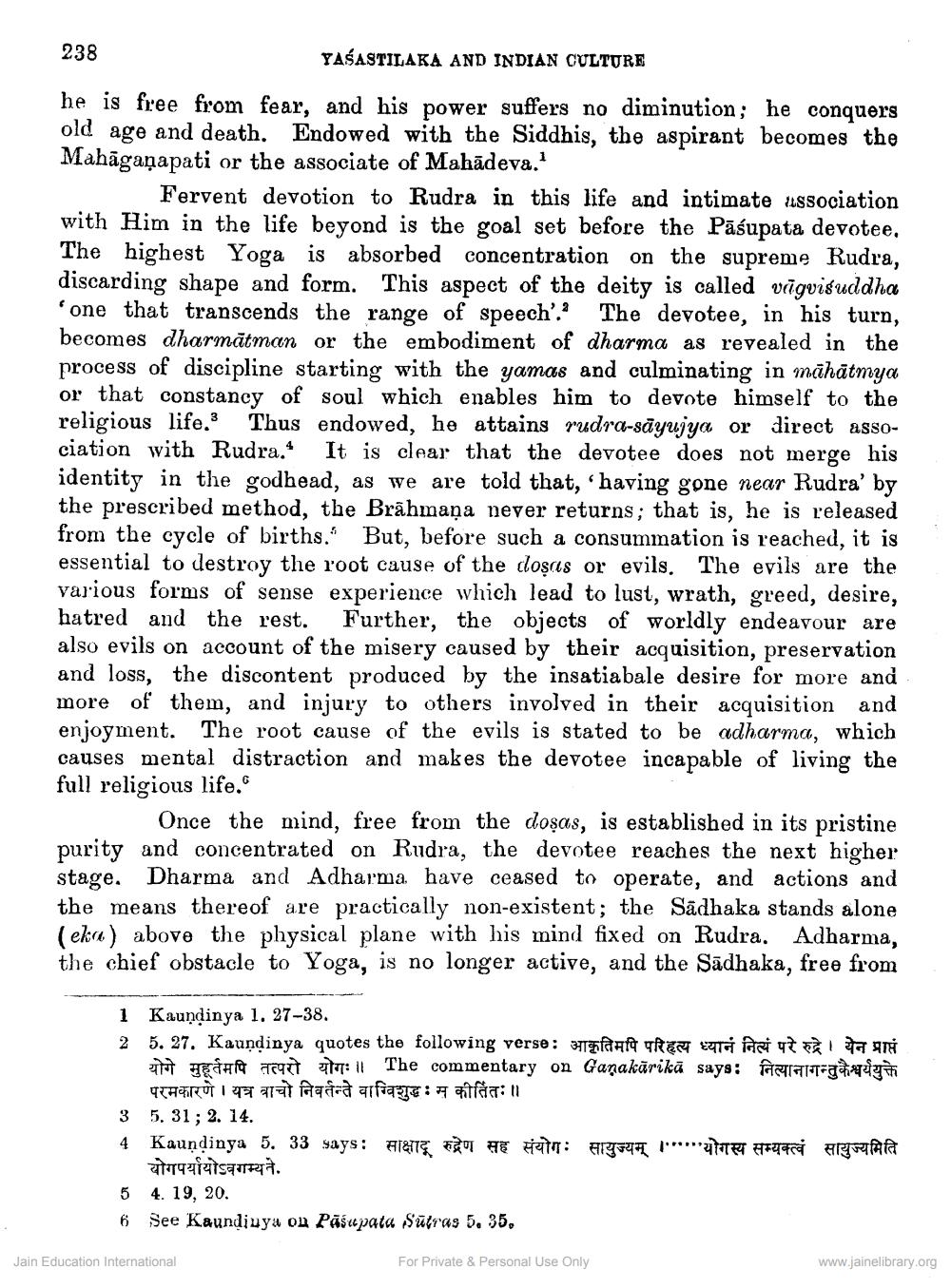________________
238
YASASTILAKA AND INDIAN CULTURE
he is free from fear, and his power suffers no diminution; he conquers old age and death. Endowed with the Siddhis, the aspirant becomes the Mahaganapati or the associate of Mahadeva.1
Fervent devotion to Rudra in this life and intimate association with Him in the life beyond is the goal set before the Pasupata devotee. The highest Yoga is absorbed concentration on the supreme Rudra, discarding shape and form. This aspect of the deity is called vägvisuddha 'one that transcends the range of speech'.' The devotee, in his turn, becomes dharmatman or the embodiment of dharma as revealed in the process of discipline starting with the yamas and culminating in māhātmya or that constancy of soul which enables him to devote himself to the religious life.3 Thus endowed, he attains rudra-sayujya or direct association with Rudra. It is clear that the devotee does not merge his identity in the godhead, as we are told that, 'having gone near Rudra' by the prescribed method, the Brāhmaṇa never returns; that is, he is released from the cycle of births." But, before such a consummation is reached, it is essential to destroy the root cause of the dosas or evils. The evils are the various forms of sense experience which lead to lust, wrath, greed, desire, hatred and the rest. Further, the objects of worldly endeavour are also evils on account of the misery caused by their acquisition, preservation and loss, the discontent produced by the insatiabale desire for more and more of them, and injury to others involved in their acquisition and enjoyment. The root cause of the evils is stated to be adharma, which causes mental distraction and makes the devotee incapable of living the full religious life.
Once the mind, free from the dosas, is established in its pristine purity and concentrated on Rudra, the devotee reaches the next higher stage. Dharma and Adharma have ceased to operate, and actions and the means thereof are practically non-existent; the Sadhaka stands alone (eka) above the physical plane with his mind fixed on Rudra. Adharma, the chief obstacle to Yoga, is no longer active, and the Sadhaka, free from
1 Kaundinya 1. 27-38.
2 5.27. Kaundinya quotes the following verse : आकृतिमपि परिहृत्य ध्यानं नित्यं परे रुद्रे । येन प्राप्तं योगे मुहूर्तमपि तत्परो योगः ॥ The commentary on Ganakārika says: नित्यानागन्तुकैश्वर्ययुक्ते परमकारणे । यत्र वाचो निवर्तन्ते वाग्विशुद्धः स कीर्तितः ॥
5. 31; 2. 14.
3
4 Kaundinya 5 33 says: साक्षादू रुद्रेण सह संयोगः सायुज्यम् ।......योगस्य सम्यक्त्वं सायुज्यमिति योगपर्यायोऽवगम्यते.
4. 19, 20.
See Kaundiuya on Pasupata Sutras 5. 35.
5
6
Jain Education International
For Private & Personal Use Only
www.jainelibrary.org




